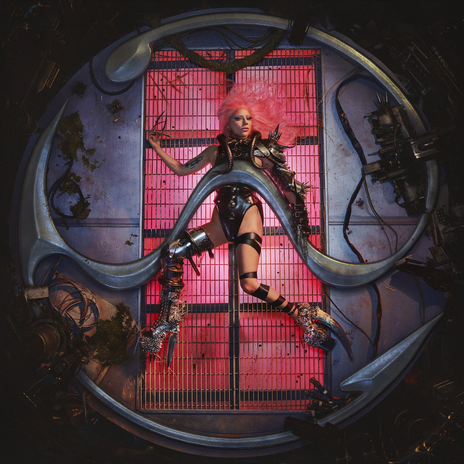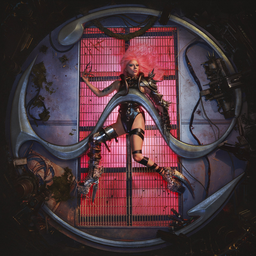Content warning: Along with discussion about Lady Gaga’s sixth studio album, ‘Chromatica,’ this article discusses topics such as post-traumatic stress disorder, sexual assault and antipsychotic medication.
It’s been a little over four months since pop music superstar and industry trailblazer Lady Gaga dropped her sixth studio album, Chromatica — and it’s already made its mark on history.
Chromatica, Gaga’s first pop-dance album since 2013’s ARTPOP, went No. 1 in over 20 countries, including the United States, Canada, Australia and the United Kingdom. It also became the 5-foot-2 singer’s sixth consecutive No. 1 album on the Billboard 200 chart.
It doesn’t stop there — Chromatica garnered over 500 million on-demand streams in the U.S., 1 billion streams on Spotify, and also spent 16 weeks at No. 1 on Billboard’s Top Dance/Electronic Albums chart.
The album also spawned two chart-topping singles — “Stupid Love,” which debuted and peaked at No. 5 on the Billboard Hot 100 chart the week of March 14, and “Rain on Me” with Ariana Grande, which hit No. 1 on the Billboard Hot 100 chart the week of June 6.
Gaga also swept at this year’s Video Music Awards hosted by MTV. She took home five moon-people, including the first-ever MTV Tricon award. Is there anything this woman can’t do?
While Chromatica brought Lady Gaga even more success after earning numerous Grammy awards, performing at Super Bowl LI and earning an Academy award for her silver-screen debut A Star is Born, it’s also been deemed her most personal record yet. Many have argued that 2016’s Joanne, a vulnerable nod to country-folk music and an homage to her late aunt of the same name, serves as Gaga’s most personal record. Joanne strayed away from Gaga’s usual pop sound and provided emotional singles such as “Million Reasons” and its titular track.
However, Chromatica continues Gaga’s love affair with her electro-pop roots as she penned personal experiences over campy house beats. Here’s why Earth is canceled and her latest record actually holds that title.
- The lyrics have deep underlying messages
-
While Chromatica is the dance floor that Gaga claims she fought for, its lyrical contents are deeply personal and reveal some of the hardships the singer has endured over the years. Some topics she explores are self-harm, past traumas and juggling fame with her personal life.
A more obvious example is track six, “Fun Tonight,” where she sings:
You love the paparazzi, love the fame / Even though you know it causes me pain
Other tracks, including the triumphant club banger “Rain on Me,” “911,” “Sine from Above” with Elton John, and “1000 Doves” layer hard-hitting lyrics over campy beats reminiscent of ’90s house music.
- Gaga made many self-realizations during the creative process
-
Over the two and a half years it took to create Chromatica, Gaga made many realizations about her relationship with herself.
“I totally gave up on myself. I hated being famous, I hated being a star. I felt exhausted and used up,” the singer told CBS Sunday Morning’s Lee Cowan in a Sept. 2020 interview.
Cowan said she didn’t feel used up by the industry or her fans, but by “the very entity” Stefani Germanotta created — Lady Gaga.
All sense of normalcy was lost when Lady Gaga busted through the music industry in 2008 and eventually became a household name. She said that everyday tasks, like going to the grocery store and having a meal with her family, became daunting. Ultimately, it all began to take a toll on her mental health and even caused suicidal thoughts.
“I didn’t really understand why I should live other than to be there for my family. That was an actual real thought and feeling — ‘why should I stick around?'” she told Cowan.
- Recording was a form of therapy for Gaga
-
On that note, Gaga felt uninspired and even angry at her piano for “making her Lady Gaga.” On multiple occasions, including her recent CBS Sunday Morning interview and in her single “911,” Gaga claims that the superstar she made of herself is her biggest enemy.
The “Born This Way” hitmaker even admitted during several interviews that producer and friend BloodPop had to drag her “off the couch” and into the studio most days. She said that his motivation helped her finish Chromatica‘s creation and that he helped her “push forward” and get out of her “miserable” state.
That’s it — everyone say “thank you” to BloodPop for being a great collaborator and friend to Gaga.
- She shared her traumas with new friend Ariana Grande while creating “Rain on Me”
-
In a promotional interview with Zane Lowe for Apple Music’s Beats 1, Gaga shared that she felt “ashamed” to befriend and hang out with fellow pop star Ariana Grande. As Grande is another public figure who has endured several traumas in a short amount of time, Gaga said she wanted to keep her distance from the “thank u, next” singer to allow her to heal.
“I was too ashamed to hang out with her because I didn’t want to project all of this negativity onto something that was healing and so beautiful,” Gaga told Zane Lowe.
Both Gaga and Grande suffer from post-traumatic stress disorder; Grande from the 2017 bombing that took place at her Dangerous Woman Tour in Manchester, England, and Gaga from being repeatedly raped by an industry executive early in her career.
Grande gushed over her relationship with Gaga on Twitter, where she called Mother Monster her “sister” who knows pain the same way she does. Honestly, this is the collaboration and friendship we all dreamed of!
- Her latest single, “911,” explores ideas of seeking help through medication
-
While the visual component of “911” depicts parallels between the singer’s “Gaga-fied” nod to Armenian culture and the commonalities of mental health and harmful accidents, the song itself touches on Gaga’s reliance on antipsychotic medication. The term “pop a 911” that echoes throughout the chorus refers to that pill intake.
The video itself includes glamorous choreography, outfits and makeup looks, but it also visualizes a very vulnerable, human Gaga who cries when she forgets to take her medication. The “glam” side of the video serves as a hallucination that Gaga’s character has following a car accident; however, the elements represent real-life people and events, such as the paramedics and driver leaning against an airbag.
Gaga has openly referred to both the song and its video as a depiction of “when your brain and your body feel at war with each other,” much like the fibromyalgia she suffers with due to her PTSD.
While Chromatica is the quarantine dance record of our dreams, we have to take into account that a lot of love and healing was brought through its creation.
Lady Gaga’s Chromatica is available for purchase and streaming now.



